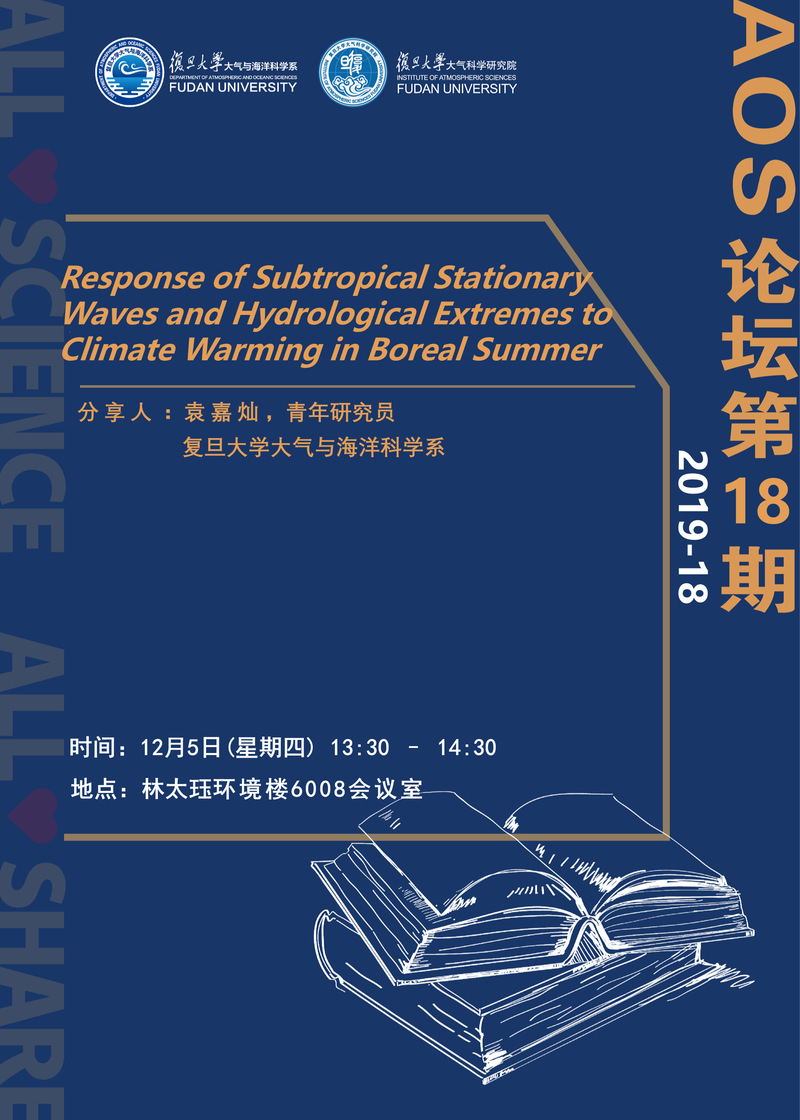
题目:Response of Subtropical Stationary Waves and Hydrological Extremes to Climate Warming in Boreal Summer
主讲人:袁嘉灿,青年研究员,复旦大学大气与海洋科学系
摘要:Inland hydrological extremes (droughts and extreme rainfall events) can cause enormous economic loss and threaten lives. Observations show the frequency of hydrological extremes has increased significantly during recent decades. The increase can, to a large extent, be explained by a warming climate. Here we find subtropical stationary waves in the atmosphere, which emerge as alternating subtropical high-pressure systems and monsoon low-pressure systems, can act as an important bridge connecting the frequency of regional hydrological extremes with global warming. We first investigate multiple reanalysis products in the period of 1979-2013. A robust positive trend in the subtropical stationary-wave amplitude (SWA) is observed during this period. These changes are found to be coupled with the changes in precipitation amount and frequency of hydrological extremes over the subtropical regions. We then examine the past and future responses of SWA to increasing climate forcing using 31 CMIP5 GCMs. The results indicate that the SWA is likely to intensify in a warming climate, and a positive SWA trend is at least partially driven by increasing external forcing. The results about interannual relationships between SWA and hydrological-extreme frequency suggest that high SWA is related to increased heavy-rainfall day frequency over South Asia, the Indochinese Peninsula, and southern China (SA-EA), and to increased dry-spell-day frequency over the northwestern and central United States (NUS) and southern United States and Mexico (SUS-MEX). These relationships could be explained as circulation anomalies associated with SWA providing persistent weather conditions that favor the occurrence of hydrological extremes over these regions. The projected amplification of SWA, combined with the relationships between SWA and frequency of hydrological extremes, partially explain the projected increases in frequency of dry-spells over NUS and SUSMEX and in frequency of heavy-rainfall days over SA-EA in a warming climate.